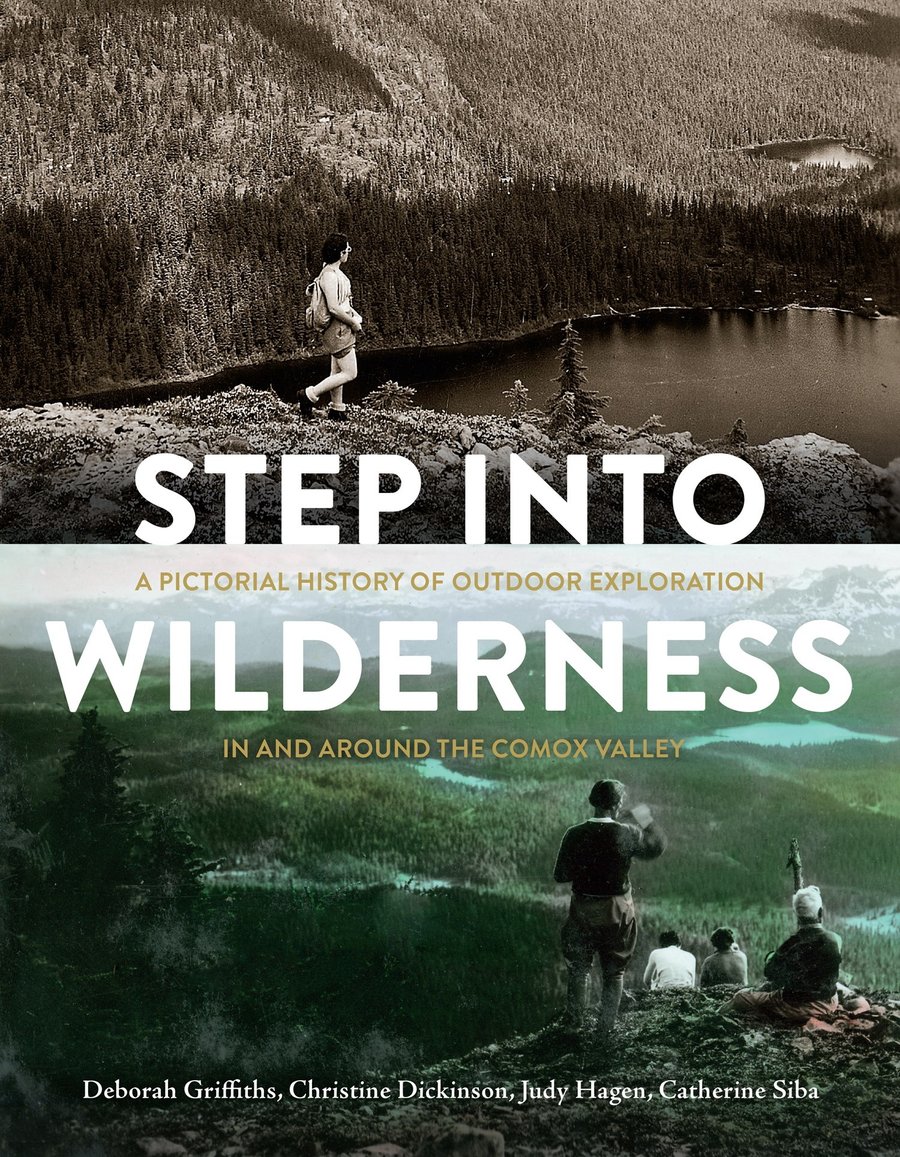
Step Into Wilderness: A Pictorial History of Outdoor Exploration in and Around the Comox Valley
Review By Sarah Jacobs
December 1, 2021
BC Studies no. 212 Winter 2021/22 | p. 221-222
Drawing primarily on a photographic collection held by the Courtenay and District Museum, Step into Wilderness considers “the theme of people living in the natural world and exploring both the opportunities it provides and the challenges it presents” (p. 13). With a clear passion for the region, Griffiths, Dickinson, Hagen and Siba detail how the natural resources and “boldly picturesque” (p. 37) beauty of the locale led to the development of industry and recreation. Over five chapters, plus a brief introduction and conclusion, the authors rely on photographs to capture bygone moments, while arguing that these moments contribute to what the Comox Valley is today. Theirs is a notion of history as cumulative, asserting that those currently living in or visiting the area are building on the labours and imaginings of past generations.
The book showcases a remarkable collection of images spanning the mid-nineteenth to mid-twentieth century, including photographs of landscapes long since modified and buildings lost to fire. The bulk of the photographs, however, feature posed and candid moments of people at work and play, including well-known individuals and families such as Eugene Croteau, the Sutherlands and Ruth Masters. With the images serving as a backdrop, the narrative centers on capable and inventive people having fun and overcoming hardships such as natural disasters and the Great Depression. For instance, Jim and Elizabeth Forbes rebuild their hotel three times in response to a storm, fire and flood.
Amidst this coverage of resilience and community spirit, conflict amongst fellow residents gets short shrift. The territorial dispossession of Indigenous peoples is glossed over as early settlers pre-empt land (no definition of this practice is provided) or buy salmon “from their Indigenous neighbours” (p. 154). The resourcefulness of Nikkei brothers, Rikichi Kawamura and Shosuke Nakano, who “rehabilitated two abandoned homesteads” (p. 47), is discussed without mention of why these men might purchase a dilapidated farm. In these sections, Griffiths et al. could have better explored the complex and intersecting histories of the Valley’s first peoples and settlers.
Griffiths et al. might have also considered the ecological consequences of economic development, especially since changes to the environment are well captured in the images. In fact, an aerial photograph of the Town of Comox in 1934 (p. 136) shows how the harbour was designed to accommodate large shipping vessels, although the surrounding text does not address this. In the same chapter, declining fish stocks are mentioned, but in a manner somehow removed from the actions of all the people photographed with their catches. Rather than consider the natural environment a “wilderness”, Griffiths et al. could have employed the photographs to trace shifting human–environment interactions amidst growing economic activity.
That said, a thorough consideration of either social conflict or environmental consequences would have detoured the narrative from its main objective, namely, to highlight the accomplishments of local leaders and trailblazers. To that point, the authors argue that the pictures reveal a legacy of “people acting and achieving” (p. 193). Certainly, they do. But perhaps the questions the images raise are just as important as what they reveal. As I moved through the photographs, I was left wondering, from whose perspective am I viewing things? Why were these images selected for inclusion into the book? And how should they be interpreted? These questions go unaddressed. Clearly, Griffiths et al. consider photography a means of witnessing history, faithfully and unproblematically recording past places and events. They contend that in knowing these images, current residents can better know themselves. Accordingly, Step into Wilderness will likely appeal to those already familiar with the area, keen to see the faces and places captured in these pages.
Publication Information
Griffiths, Deborah, Christine Dickinson, Judy Hagen, Catherine Siba. Step Into Wilderness: A Pictorial History of Outdoor Exploration in and Around the Comox Valley. Madeira Park, BC: Harbour Publishing, 2020. 208 pp. $39.95 paper.
